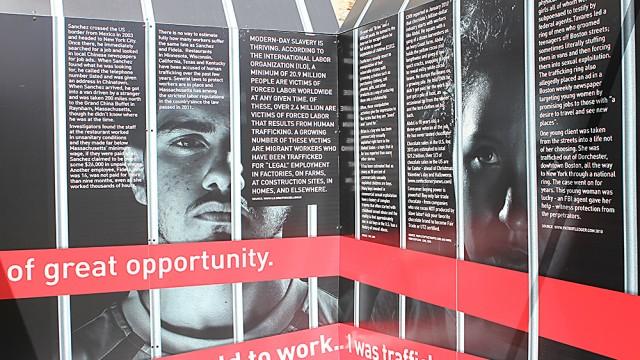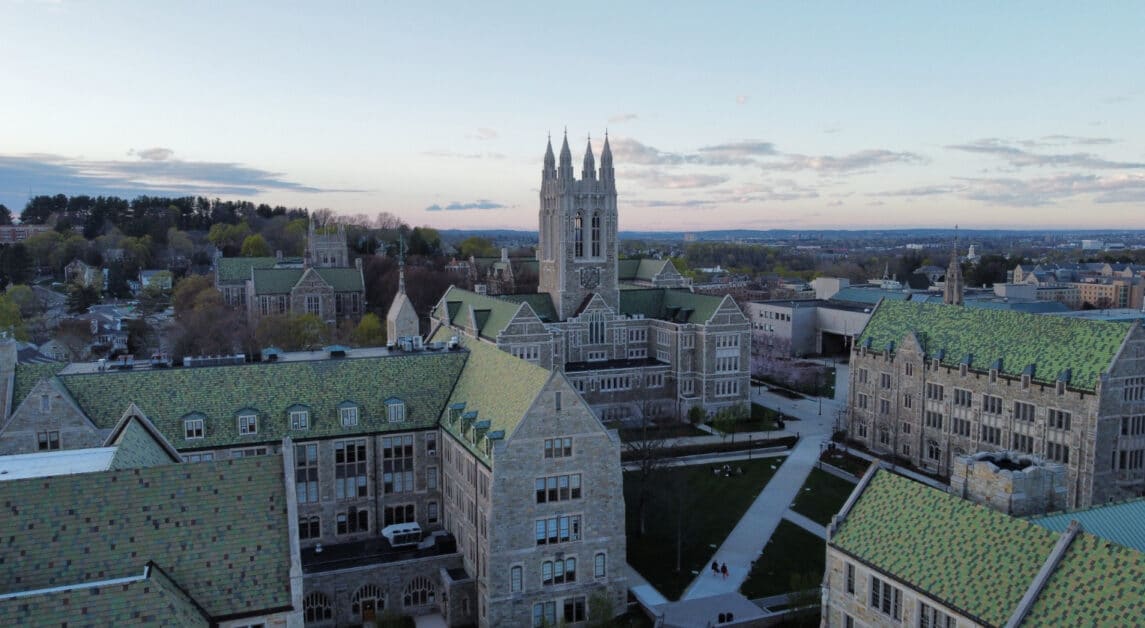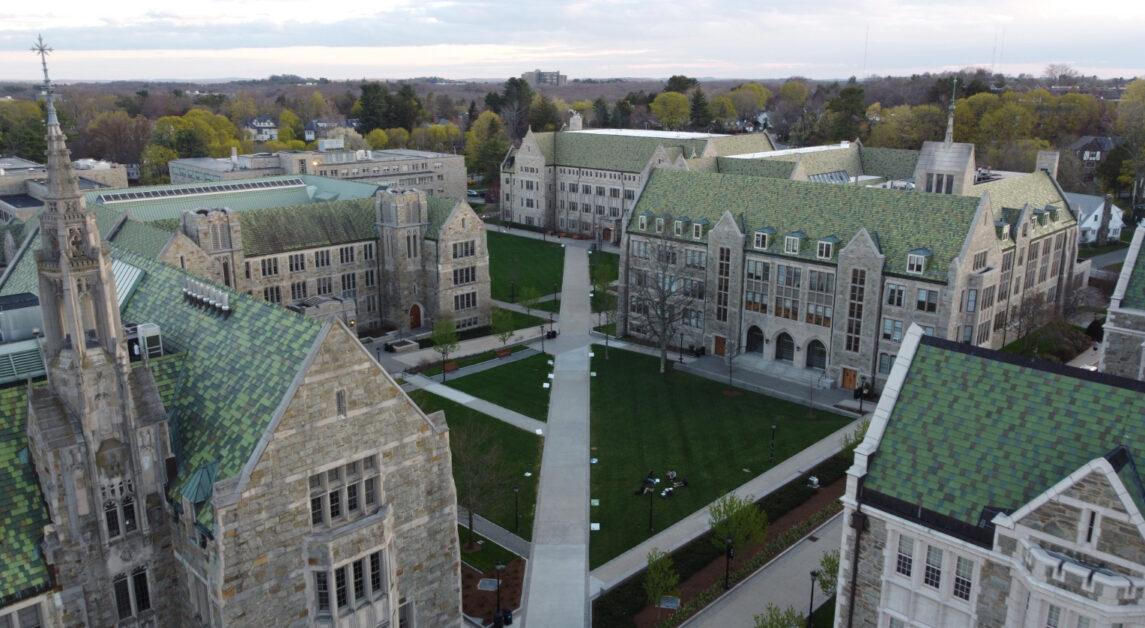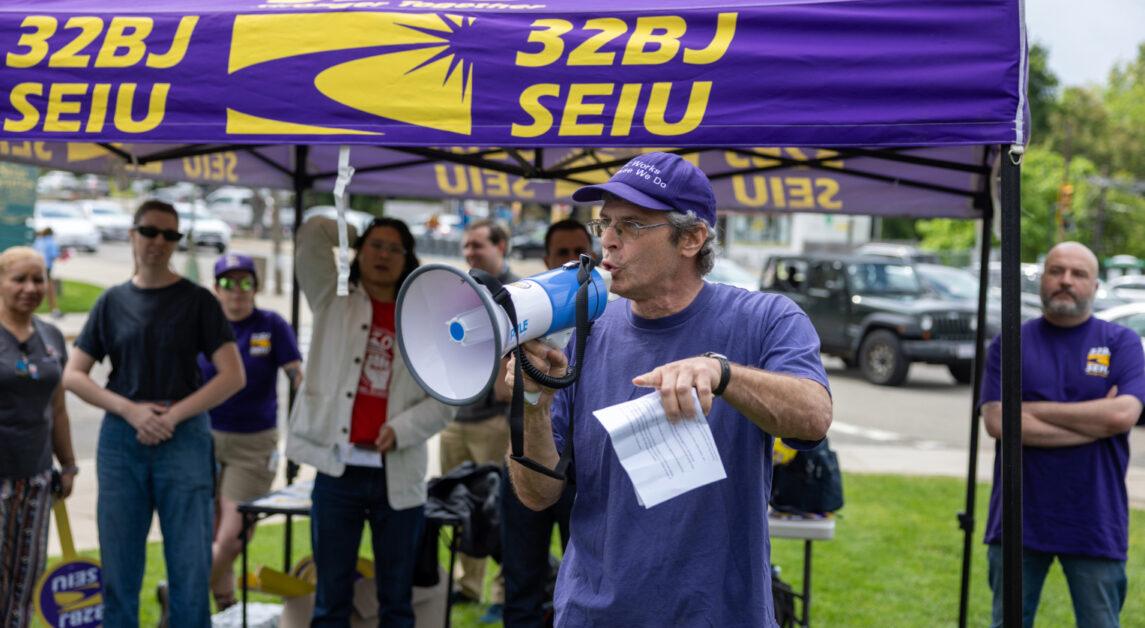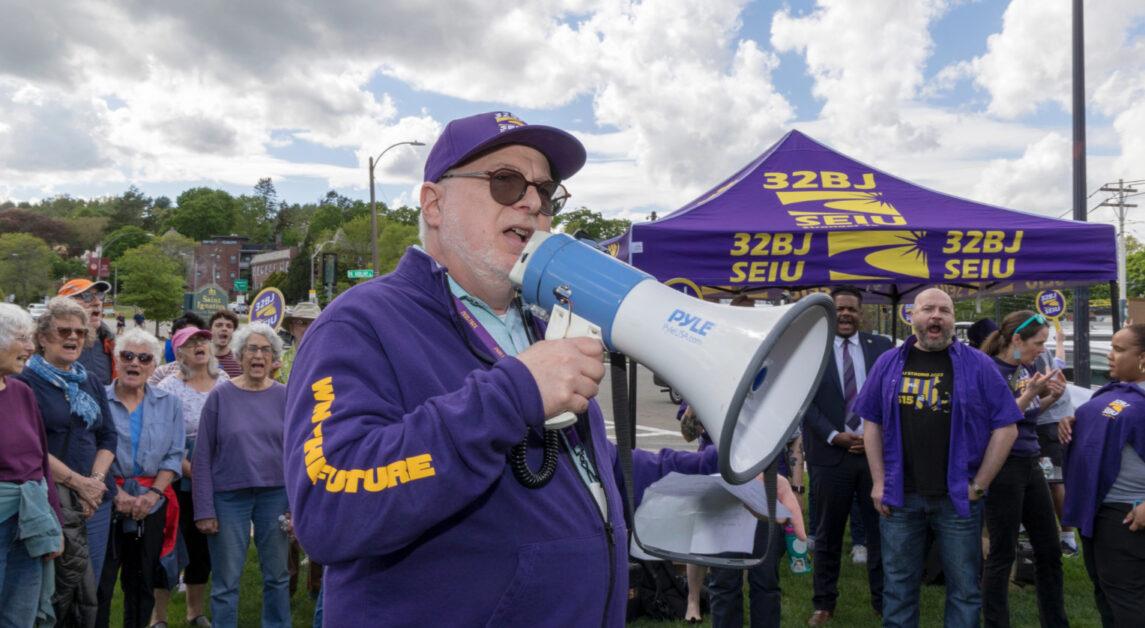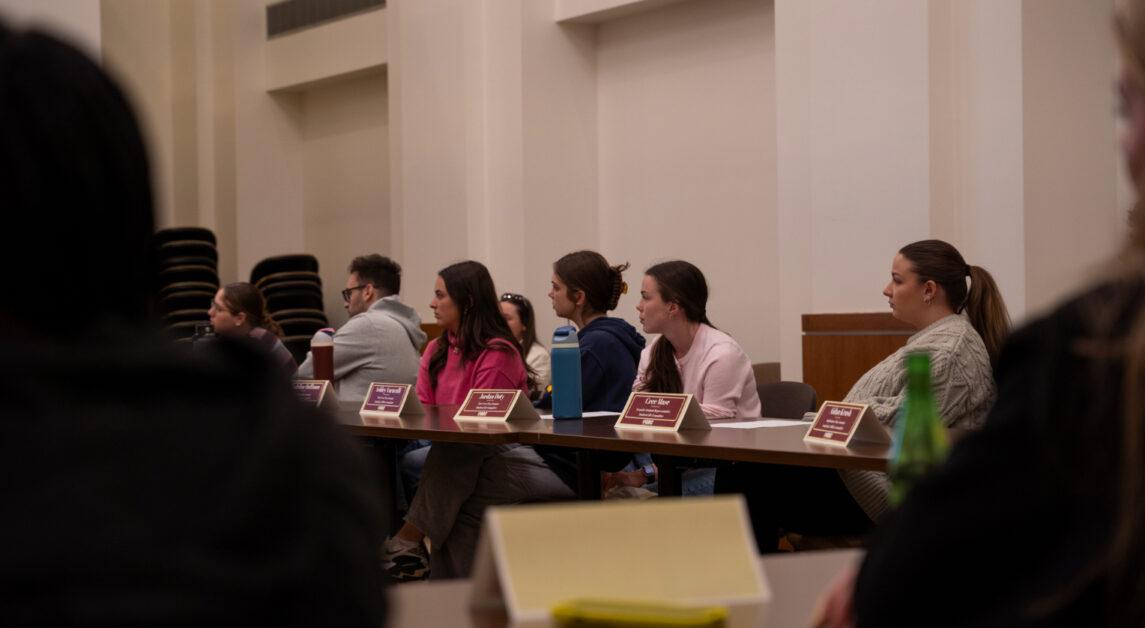At first glance, the 10-foot tall, 1,200-pound gift box sitting by the Stokes lawn seems fairly innocuous or unthreatening—playful, even—with its appealing exterior embellishment of colorful wrapping paper. The inside tells a different story entirely. The interior walls are adorned with the faces and stories of survivors who have experienced the evils of local human trafficking, prostitution, and forced labor in a close-to-home setting.
This exhibit is a joint effort on the part of STOP THE TRAFFIK and the United Nations Global Initiative to Fight Human Trafficking (UN GIFT) to raise awareness and promote education about the existence of human trafficking all over the world, and most importantly, in our own backyards. The exhibit itself was brought to campus as a feature of last week’s Arts Fest by Rallying Efforts Against Contemporary Trafficking (REACT) with support from the BC Women’s Center in promotions, outreach, and volunteer training, with institutional support from various departments across the University.
The installation aims to create an accessible and interactive way to introduce people to a worldwide issue with domestic implications, and to empower individuals to take a stand. In this regard, interactivity with the exhibit has been crucial to its educational intentions.
“We joined together with Arts Fest to have it premiere here and it was very successful, we got a lot of foot traffic,” said Alyssa Giammarella, president of REACT and A&S ’15. “A lot of people who stop by are also concerned about other issues like fair trade and sexual assault, so it ties in with a lot of on-campus issues that people care about, but also it reaches that broader population of people affected.”
An active part of the recent BC Arts Fest and a recipient of major support from the BC Arts Council, the UN GIFT Box is, in itself, a piece of “awareness art.” In other words, the physical box itself is intended as a metaphor for the subject, deliberately reflecting the deception that lures many of the estimated 27 million individuals involved into the dark world of human trafficking.
“The idea of it is that it looks like a gift box on the outside—it’s supposed to be enticing and sweet, and you’re inclined to go check it out,” Giammarella said on the function of the structure itself. “But when you go inside, it kind of looks like a jail cell—it’s a metaphor, essentially, for the promise of a better life or the promise of something good, but then you get inside and you’re stuck.”
As a worldwide movement, the UN GIFT Box was launched almost three years ago at the 2012 London Olympics, but has only recently found a home in the United States, debuting in New York for the 2014 Super Bowl. This year, the box established its presence in New England, making stops at the University of Massachusetts Lowell and the University of New Hampshire before coming to BC for its first sojourn in the Boston area. The GIFT Box will continue its Boston-area tour this week with a stop at Faneuil Hall as endorsed by the office of the mayor of Boston.
“The intention of this initiative is prevention through awareness in education,” said Deb O’Hara-Rusckowski, BC STM ’14, an instrumental figure in both bringing the UN GIFT Box to campus and promoting this exhibit as a member of the NGO Committee to Stop Trafficking in Persons (CSTIP) at the United Nations. “So the goal is to have a box in every single state.”
The potency of the GIFT Box is derived in large part from its focus on local issues rather than worldwide ones. The accounts of human trafficking and forced labor inscribed within its walls, however, are those of survivors not necessarily far from home.
“This box is particular to New England, if you look inside the stories are about places like Boston, Hartford, Dorchester,” Giammarella said.
An ongoing effort, both Giammarella and O’Hara-Rusckowski acknowledge the success of the exhibit on campus, citing active participation on the part of the student body as essential to both the UN GIFT Box initiative and the cause as a whole. Contributions are highly encouraged from anyone with the desire to play a part in the movement, and can be made at either the “UN GIFT Box New England” Facebook page or with the River South Center in Quincy, Mass., which has operated as the Boston headquarters for the cause and has been responsible for overseeing the New England campaign and success of the exhibit.
“The response has been very positive,” Giammarella said. “People are willing to stop by for a couple of minutes and think, ‘oh wow, I didn’t know this kind of thing was happening in Boston,’ and that’s the kind of effect we want to have. It’s here to educate and to raise awareness, but also to start to empower people—to get them to sign the petition and understand that it’s an issue that happens. You can’t really miss it.”
Featured Image by Drew Hoo / Heights Editor

